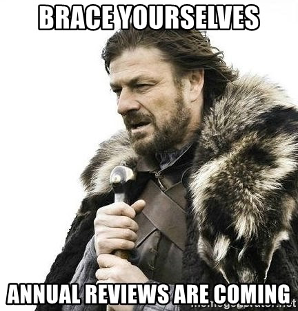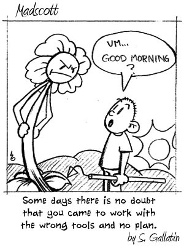To strike dread into the heart of a nurse manager or a nurse, all you need is two words: Annual Review.

Over the past three years, we’ve had the opportunity to speak with hundreds of nurse managers and nurses in health systems across the country. And, of all the topics discussed, none have yielded a more consistently unsavory response.
We’ve heard it all – managers having to complete 150 reviews in a month. Staff receiving reviews with a different team member’s name pasted in. Reviews being filled out by the manager during the meeting. Review requirements that are 15 pages long (!!). Managers left feeling resigned and frustrated, staff feeling disconnected, under-appreciated, and unnoticed after being subjected to such a process. A moment that should have been a celebration of a team member’s work, their relationship with their manager and their institution becomes a moment of frustration.

I believe a significant component of burnout is the feeling that one of the work one does not matter, and the “Annual Review” feeds the spiral of disconnection for both manager and staff. Nursing turnover averages about 20% nationally. 49% of nurses have considered leaving the profession altogether. The primary reason nurses leave their jobs is that they don’t feel supported by their manager. The problem is getting more acute as we speak, where a rapidly changing millennial workforce is raising their expectations of support, feedback from their managers at work.
I think it’s time we agree that performance management in healthcare is woefully broken.
Annual reviews – a symptom of a deeper issue
Why is this the case? Why is this broken idea of the annual review so prevalent and persistent? What can we do to turn the annual review into a glorious celebration of an individual and institution’s shared goals and dreams? In my opinion, the annual review’s failure is a symptom of two deeper notions that healthcare leaders have not appreciated and addressed.
#1 – Performance management is a daily process. Traditionally associated with this yearly, dreaded ceremony known as the annual review, the reality is that performance management is a massive part of the daily job for most managers. It is recognizing and reinforcing positive behaviors, coaching to remedy negative ones, and supporting their staff through the ups and downs of being human. It is managing their people to perform optimally and help their institution meet its clinical and financial goals. Performance management, in a way, is management, and managers are not equipped with the frameworks or best practices they need to do this intentionally on a daily basis.
#2 – Healthcare managers are missing the right tools for this job. Hospitals are structurally… “unique”.. in a way no other sector is. Managers can manage teams over 100 people, on 24X7 units, across multiple shifts. Add to that the fact that most managers are “battlefield promoted” – great clinical nurses nudged into management. They are handed Microsoft Outlook, some sticky notes, excel sheets, and ten disjointed systems and saddled with an expectation of managing a team of 100 people – equivalent in my mind to sending someone into battle with sticks and stones. If we were to ask managers the famous Quint Studer question – “Do you have the tools you need to do your job” – I’m sure the answer would be an emphatic NO!
Organizations are adding more on to managers’ plates – such as quarterly check-ins – to move towards a “continuous” system of performance management. But that misses the point. Adding another process only increases managers’ workload. Continuous performance management is already happening – we just need to help managers make it more intentional and effective.
Managers are trying their best but struggling
Managers feel this gap. Most managers struggle with the chaos of excel, and paper, and stray documents, but the best managers we have spoken to have tried their best to hack together systems to help with these daily workflows – here are some gems:
- Three-ring binders: One manager printed out every piece of information she received about a team member and placed it in a massive three-ring binder, with a section for each person. She did this to provide higher quality feedback to her staff.
- Access databases: One manager of a particularly large ED set up a system where a unit coordinator would upload all recognitions, certifications, and other feedback in an access database to give her staff meaningful reviews
- Microsoft OneNote: One manager had a system with 75 tabs in Microsoft OneNote, where she would keep track of conversations with each of her team members.
- Outlook folders: One manager had 100 different folders in outlook to manage communications with each team member.

What managers need
To truly help managers, we need to help them with the day-to-day management of their massive teams. We need to help them identify recognition opportunities and recognize their staff. Easily document and follow up on accountability conversations. Remind themselves to follow up with a team member with a sick parent and check if they need any support. Minimize manual spreadsheets for tracking compliance when a machine can do that for them. And when the moment of the annual review arrives, have a consistent way to recall and assess their engagement with a staff member rather than scrambling through email searching for crumbs of past interactions.
They need a system that crystallizes these daily team management tasks into workflows and gives them all tools and data required to execute intentionally, efficiently, and effectively, without having to cobble together systems on their own. High quality, daily engagement helps staff feel supported, and managers feel fulfilled. It is the wellspring of real satisfaction for staff, and quality for patients.
We built Laudio to serve this need, and make true, enabling, empowering leadership easy for managers. With Laudio, managers can finally have their teams’ and their institution’s backs.